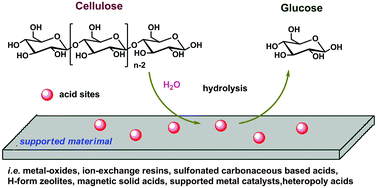Hydrolysis of cellulose to glucose by solid acid catalysts
Abstract
As the main component of lignocelluloses, cellulose is a

* Corresponding authors
a
Department of Chemistry, Anhui Province Key Laboratory of Biomass Clean Energy, University of Science and Technology of China, Hefei 230026, P. R. China
E-mail:
fuyao@ustc.edu.cn
As the main component of lignocelluloses, cellulose is a

 Please wait while we load your content...
Something went wrong. Try again?
Please wait while we load your content...
Something went wrong. Try again?
Y. Huang and Y. Fu, Green Chem., 2013, 15, 1095 DOI: 10.1039/C3GC40136G
To request permission to reproduce material from this article, please go to the Copyright Clearance Center request page.
If you are an author contributing to an RSC publication, you do not need to request permission provided correct acknowledgement is given.
If you are the author of this article, you do not need to request permission to reproduce figures and diagrams provided correct acknowledgement is given. If you want to reproduce the whole article in a third-party publication (excluding your thesis/dissertation for which permission is not required) please go to the Copyright Clearance Center request page.
Read more about how to correctly acknowledge RSC content.
 Fetching data from CrossRef.
Fetching data from CrossRef.
This may take some time to load.
Loading related content
